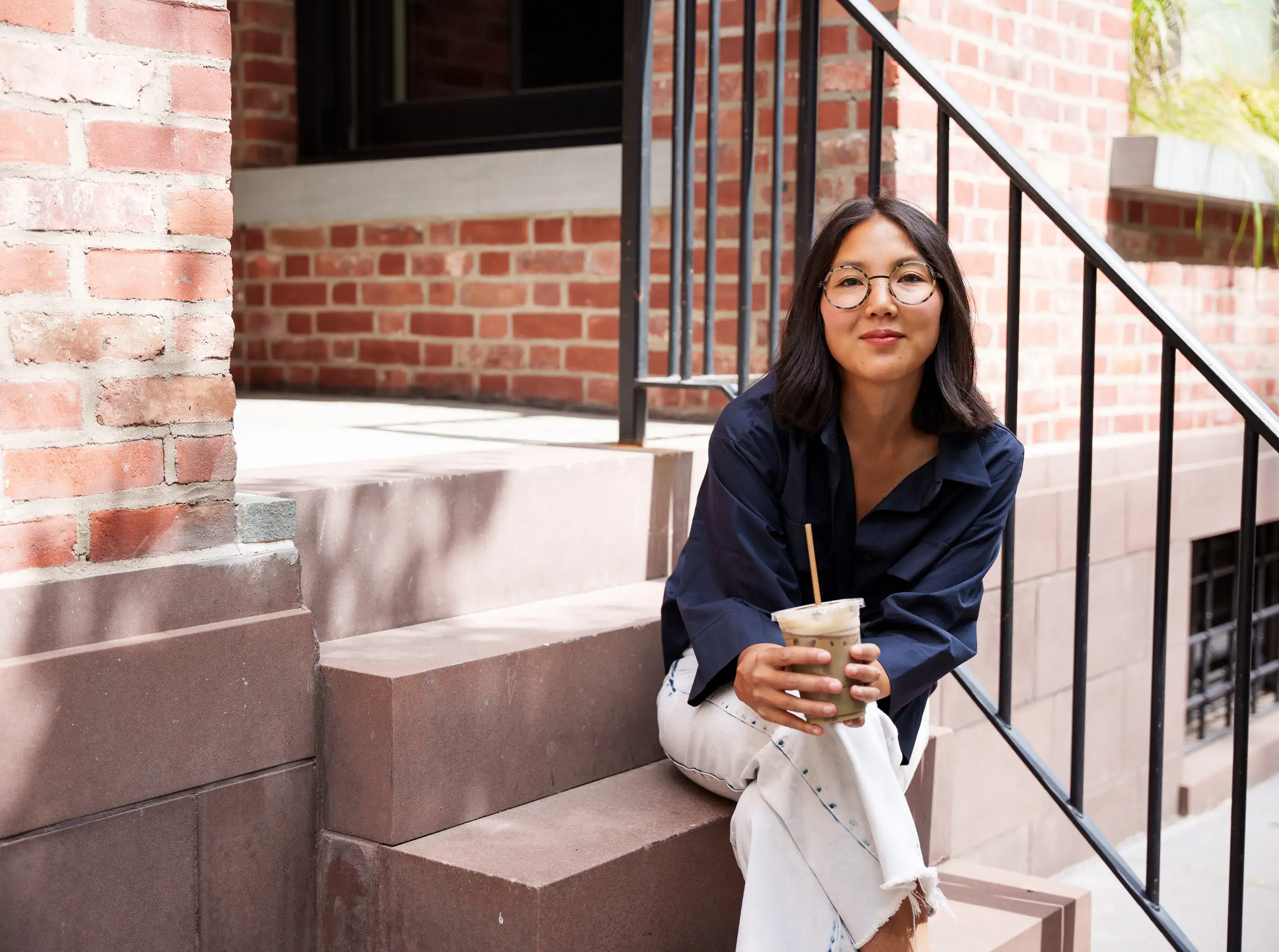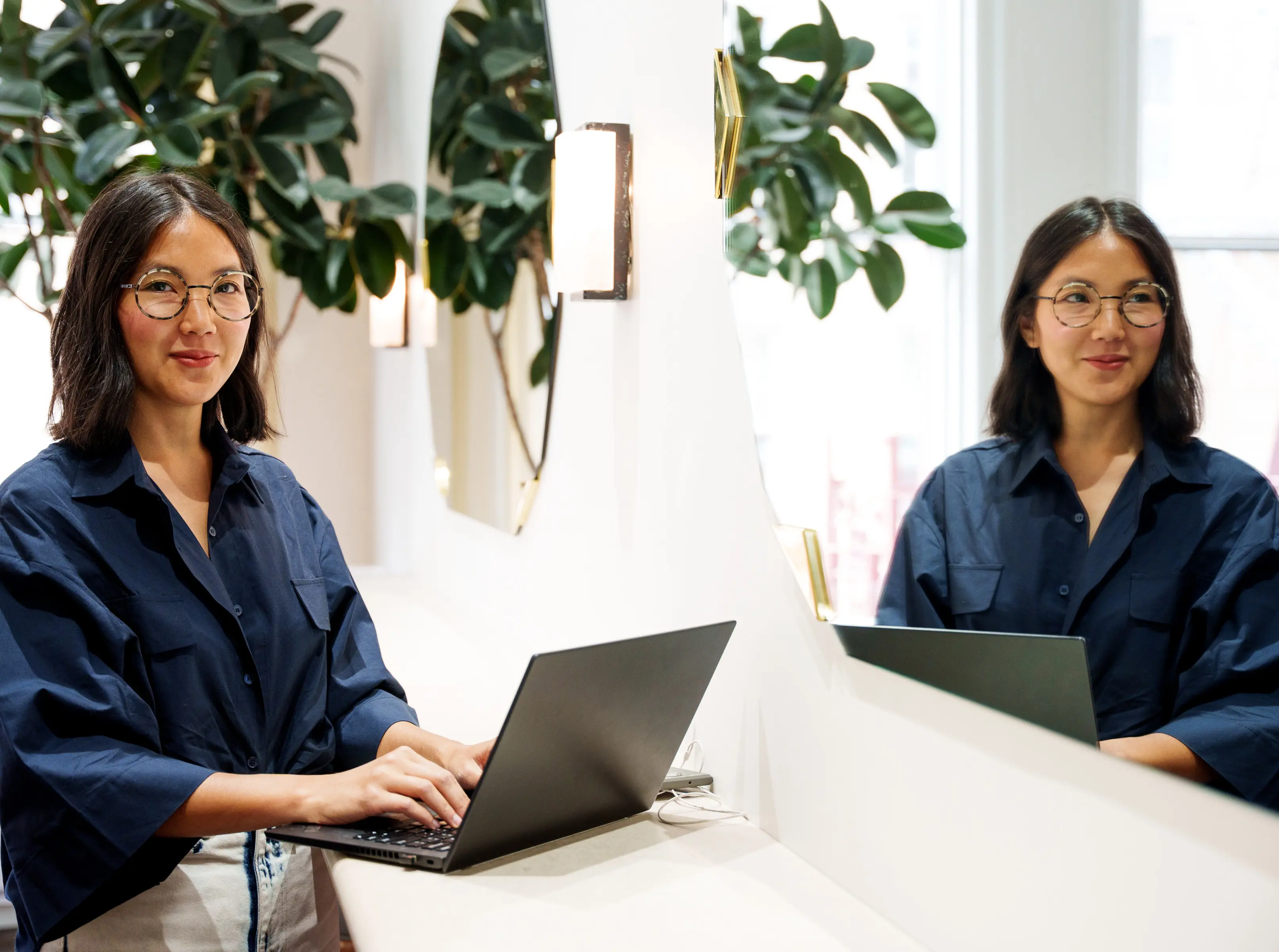Ahead of the Curve
Bettina Huang
May 9, 2023
The founding head of art-commerce space platform talks about challenging exclusivity, finding new perspectives, and why she loves being an outsider-insider.
Bettina Huang never imagined she would work in art again. A native New Yorker, Huang started her career at Christie’s, specializing in contemporary art auctions, over a decade ago. Huang, who graduated with degrees in art history and economics, could not have asked for a more perfect job at the time. However, the experience laid bare the elitism and exclusivity of the traditional art industry, which stood in contrast to Huang’s desire to innovate on new avenues of access to art for more people. So she left the art world entirely and began working for e-commerce startups—and she never looked back.
Fast forward to 2021, Huang made an unexpected return to art, partnering with the world-renowned gallerist David Zwirner to co-found Platform, a new online marketplace for buying contemporary art. A year into its inception, the startup has proven to be a disruptive force with its accessible framework, which includes a monthly selection of limited-time artworks from a rotating roster of independent galleries. The offerings have spanned from works by Ed Ruscha and Kiki Smith to emerging artists, such as Nathaniel Robinson and Mie Kim. Most notably, they recently created a limited-edition Raymond Pettibon T-shirt featuring the artist’s latest wave artwork, just in time for peak summer.
Here, Huang chats with us about selling Zwirner on the idea of Platform, staying informed by data, and how it’s time for the art industry to catch up with the rest of the world.
QTake us back to how it all started. You originally pitched the idea for Platform to David Zwirner.
AI had actually reached out to the COO at David Zwirner, who's a friend of mine from a long time ago when we both worked at Christie's, to get some advice. And in that process, she was like, We are thinking about some stuff we want to do online but we just don't know what and maybe you want to talk to David about some of your ideas. I realized this idea that I had in the back of my mind from when I worked at fab.com in e-commerce, I could adapt it so that it made sense for this context. And so I just worked through it. I did some modeling in Excel, I made a deck, and I thought about what the brand principle should be. I had a lot to talk to David about because I had thought through the concepts pretty deeply. If you look at what Platform is now and you navigate back to that initial conversation where I pitched it, it’s pretty similar.
QWhat was the deciding factor in convincing David to back Platform?
ADavid was really excited about investing in different ways of selling art online. He’s very forward-thinking for the art world, and it felt like he immediately understood what it was that I wanted to do and the ways in which it would be very different than the traditional art world. The way we've gotten to where we are is not because we took what I pitched and just created it. It was actually very much stress-tested in every way at every point. The interesting way that this has all worked is because Platform is backed by a gallery, and galleries operate in a much more conservative way. So for everything that became Platform, there was a conversation about whether that was really pushing too far by making every work transparently priced, by making every work available to buy instantly without filters, was that too far in the other direction. At every point, I had to kind of re-pitch and come up with the right data and really stress-test those things. So it isn’t that we've just translated my idea into reality, it’s that we talked a lot and debated a lot, and that's how we all felt really confident about the product we first launched last year and how it has evolved.

QYou’ve worked in many e-commerce and consumer spaces. What are common challenges you’ve seen?
AThis is not a secret but it’s really hard to develop an audience and a loyal customer, especially in this era of online shopping. It’s also about really knowing who you're selling to, why you're selling to them, and making sure that guides everything you do. I think one of the reasons a lot of the startups that have tried to pierce the art category have failed is that their goal, they say, is to sell to people outside the art world, but that's not the way in which they've designed their companies. It's important to know exactly who your real customers are and make sure what you're doing actually serves them rather than just yourself. So separating yourself from the customers is important in the planning.
QIn that sense, Platform manages to close the gap between exclusivity and accessibility in a way other art e-commerce sites have not been able to.
AI think it’s any company that has a perspective and doesn't just sell everything. But I think any company that has a perspective is going to alienate some people. I would say by and large, we have found this great sweet spot where you see that about half the customers who bought from us are seasoned collectors—some of them buy multimillion-dollar works and you hear about their names in the art world. Then the other half are new to buying or they're buying for the first, second, third time. They are probably not ultra-high net worth, may not even be high net worth, but they're interested in investing in this category that lets them express themselves and their taste, and they’re investing in the experience that lets them buy what used to not be available to them because it's only sold to art world insiders. I'm really happy with this cool sweet spot we've hit, and there's definitely room to grow so our work is not done. It's really reaching the people who never thought they could buy the art that we're selling.
"I'VE REALIZED HOW MUCH I LOVE BEING AN OUTSIDER-INSIDER, AND THAT HAS CHANGED THE WAY I THINK ABOUT THE TRAJECTORY OF MY LIFE AND MY GOALS. I DON'T WANT A LINEAR PATH AT ALL."
QPlatform just hit its one-year mark. Looking back, what were some major milestone moments?
ABuilding a team that is skilled, has an interest in art, and comes from e-commerce backgrounds was really hard. So I'm proud of having constructed this amazing small team that powers this experience that is so big and doing so much. We’ve also sold to over 20 countries, which is really cool for such a young company to be selling so globally. And we’ve also looked at some of the data and see some really cool metrics with regards to the diversity we’ve been able to encourage. Now, we might publish a white paper of this in the fall. To give you a sense of this, if you look at auctions, about 2% of the works are by women. Then if you look at the world of NFTs, which considers itself disruptive and progressive, it's something like 15%, maybe 18% of works are by women. At Platform it’s about 50/50, which is amazing. What’s even cooler is that if you look at the percent of artwork we sell, you see that women and BIPOC artists way outperform, so the percentage sales of works by women is actually far over 50%. What that means is we're able to really tap into the demand that exists in the world for these artists who are representing all these different perspectives that are so relevant to people. And that's data that's never been available before in this industry, so we can really talk about what people care about when it comes to art in ways that nobody else has ever been able to. It also speaks strongly to Platform’s ability to change the composition of the artists, not just the people who are buying art. That means a lot to me as a woman of color and as a business person.
QFor you as an entrepreneur, did you learn anything new about yourself in building Platform?
AI've realized how much I love being an outsider-insider, and that has changed the way I think about the trajectory of my life and my goals. I don't want a linear path at all. One of the amazing things about Platform is that it lets me occupy a really interesting and cool space as an outsider-insider. I know how the traditional art world works because of the years early in my career at Christie's, and I've developed a really deep and different knowledge of it through Platform. But I also have and really value and use my experience from the decade I spent in startups and e-commerce. There are so few people who have experience in both worlds, and that gives me a very unique ability to see how the industry and culture of art can and should be more connected to the ways that people outside of the art world shop, live, and value objects and experiences. It also lets me understand the ways in which the broader world is missing out if it doesn't engage with humanity's most creative output.

